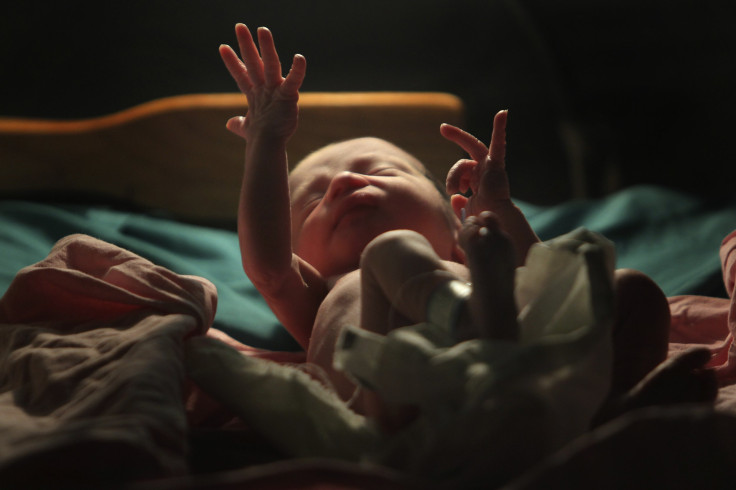Hurricane Sandy Baby Boom: 9 Months After Storm, New Jersey Hospitals Reporting Increased Birth Rates

Nine months after Hurricane Sandy ravaged the East Coast, hospitals are now reporting a noticeable spike in birth rates.
While a hurricane baby boom was the butt of all late-night talk show comics during the weeks that followed the storm, which left more than 8 million people without power, officials at Atlanticare Regional Medical Center in Galloway Township, N.J., near Atlantic City, said the increase in pregnancies is no laughing matter, confirming to NBC this week that birth rates are skyrocketing.
“The people know the exact time, when, where and how of conception in and around Sandy,” Dr. Sal Carfagno of Atlanticare Regional said, confirming a 25 percent increase in births in July and up to 15 deliveries a day, a jump from previous months' maximum of eight. "It's very unusual. Most people can't give that type of detail with respect to when they conceived their babies.”
The baby boom has not only resulted in more patients in the hospital, but also a dire need for more medical staff. Extra nurses have been brought in to tend to the growing number of expectant mothers. “All of our rooms up here are full,” said the clinical manager of labor and delivery at Atlanticare, Kim Hanson. “We’re trying to accommodate to make sure we can care of everybody."
Another New Jersey medical facility, Monmouth Medical Center in Long Branch, told the Asbury Park Press that they have witnessed a 35 percent birth rate jump. Jersey Shore University and Ocean Medical Centers in Neptune and Brick reported a smaller but noticeable increase with 20 percent birth rate spike.
Dr. Robert Graebe, chairman and program director of Monmouth Medical Center’s obstetrics and gynecology department, said that although increased births were expected as a result of the storm, the numbers are higher than anticipated. “Before the Sandy aspect hit us, we were slated to do 4,700-plus births this year,” Graebe said. “Now we are seeing a little bump in what we had predicted.”
NASA stated earlier this month that Tropical Storm Sandy’s was a one-in-700-year event and not an indication of future weather patterns. According to the study, which monitored statistical analysis of the trajectory and monitored climate change’s influences on hurricane tracks, a storm similar to the power of Hurricane Sandy has only a 0.0014 percent of occurring within the next 700 years.
© Copyright IBTimes 2024. All rights reserved.






















